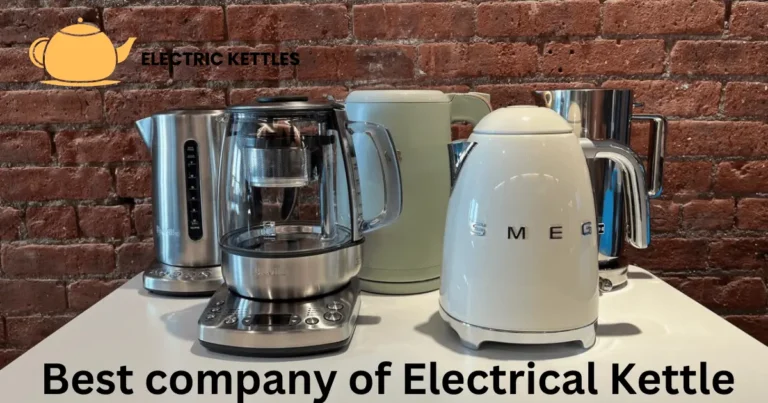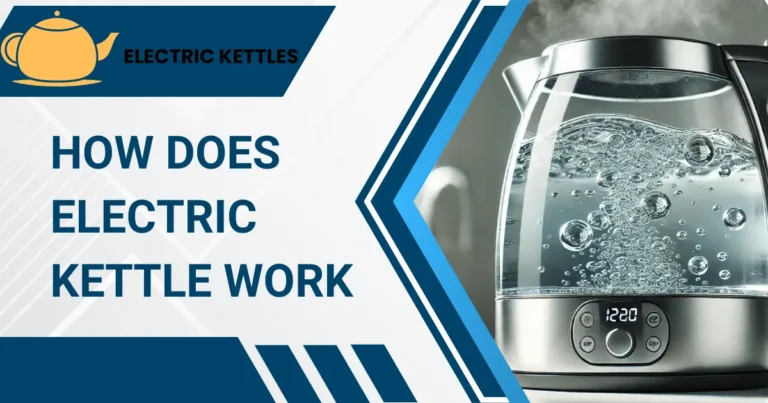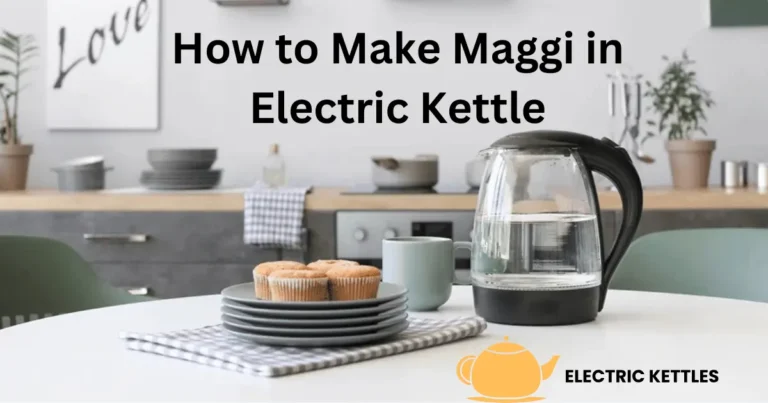How to Make Electric Kettle at Home
Making an electric kettle at home is a challenging but rewarding project. It involves understanding how electric kettles work, gathering the right materials, and assembling the parts carefully. You will need a heating element, a kettle body, electrical wiring, and safety components. This project is ideal for DIY enthusiasts who enjoy working with electrical appliances.
Make sure all electrical connections are secure and insulated to prevent shocks or short circuits. Use heat-resistant materials to handle high temperatures. Always test your kettle thoroughly before regular use. Avoid using the homemade kettle near water sources, and never leave it unattended while in use.
Table of Contents
List of Essential Components
To make an electric kettle at home, you will need the following essential components.
- Heating Element
- Kettle Body
- Base Plate
- Electrical Wiring and Insulation
- Thermostat or Temperature Sensor
- Handle and Spout
- Lid with Steam Vent
- On/Off Switch
- Rubber Gaskets and Seals
- Indicator Light
Designing Your Electric Kettle
Choosing the Right Materials
Select a material for the kettle body that is durable, heat-resistant, and safe for use with boiling water. Stainless steel is a popular choice because it is strong, rust-resistant, and easy to clean. Heatproof plastics are lightweight and can be molded into different shapes but ensure they are BPA-free and designed for high temperatures. Glass can offer a stylish look, allowing you to see the water level, but it needs to be thick and tempered to handle heat safely. You can also read How to repair an electric kettle at home.
Planning the Kettle’s Shape and Size
Decide on the shape and size of your kettle based on how much water you want it to hold and the space you have available. A compact, upright design may be ideal for small kitchens or single servings, while a wider base can increase stability and allow for a larger water capacity. Consider the balance between size and efficiency. Larger kettles take more time and energy to heat, while smaller ones are quicker but hold less water.
Preparing a Blueprint
Draw a detailed sketch of your kettle design, including all major components. Mark the locations for the heating element, handle, spout, and lid, as well as where the electrical components and wiring will be placed. Plan for the placement of safety features like the thermostat or temperature sensor, and ensure that all parts are well-positioned to avoid overheating. A good blueprint will act as a guide during assembly, helping you visualize the steps and avoid mistakes.
4 Steps to Build an Electric Kettle
1. Prepare the Heating Element
Start by obtaining a suitable heating element, such as an electric coil or flat plate. Ensure it fits properly at the bottom of the kettle body. Attach it securely using screws or heat-resistant adhesives. Make sure the heating element has proper insulation to prevent any electrical hazards.
2. Construct the Kettle Body
Assemble the main body of the kettle using your chosen materials, like stainless steel or heatproof plastic. Cut the material according to your design blueprint. Attach the spout and handle securely to the body. Ensure the body is leak-proof by sealing any joints with rubber gaskets or heat-resistant seals.
3. Install Electrical Components
Connect the heating element to the power source using high-quality electrical wiring. Install a thermostat or temperature sensor to monitor and control the water temperature. Ensure all connections are properly insulated and secure. Add an on/off switch and an indicator light to control and display the kettle’s operation.
4. Attach the Lid and Base Plate
Secure the lid with a steam vent to the top of the kettle. Attach the base plate to the bottom, ensuring it holds the heating element and wiring firmly in place. The base should provide stability and support for the kettle. Make sure all parts are aligned properly.
Assembling the Kettle
Securing All Parts Together
Double-check all attachments, such as the handle, spout, lid, and base, to make sure they are secure. Tighten any loose screws and apply additional sealing material if needed to ensure a tight, leak-proof construction. Ensure that all electrical components, like the thermostat, wiring, and on/off switch, are safely enclosed and insulated.
Final Assembly Checks
Inspect the entire kettle for any gaps, loose parts, or potential hazards. Verify that all components are properly aligned and that the kettle is balanced and stable on its base. Test the lid’s fit and the functionality of the spout. Make any final adjustments to ensure that the kettle is ready for use.
Testing and Safety Checks
- Verify Electrical Connections: Before powering on the kettle, inspect all electrical connections for security and proper insulation. Ensure that wires are connected to the heating element, thermostat, and on/off switch correctly. Look for any exposed wires or loose connections that could cause a short circuit or electrical shock.
- Conduct a Boil Test: Fill the kettle with a small amount of water and plug it in. Turn on the kettle and observe the heating process. Check if the water heats up properly and if the automatic shut-off mechanism activates when the water reaches boiling point. Ensure that there are no leaks from the spout, handle, or base.
- Check for Overheating: Monitor the kettle during the boil test to see if it overheats. The handle and outer body should remain cool to the touch. Make sure the thermostat is working correctly by turning off the kettle when the water reaches the set temperature. Look for any signs of overheating or malfunction.
- Inspect for Leaks and Stability: After the boil test, check for any water leaks around the spout, handle, or base. Ensure that the kettle is stable on its base and that all parts are securely attached. Test the spout and handle for ease of use and safety. Confirm that the lid fits properly and that the steam vent is functioning.
- Perform Multiple Test Runs: Run the kettle through several boiling cycles to ensure consistent performance. Test the kettle under different conditions to confirm that it operates reliably and safely. Pay attention to any unusual noises, smells, or performance issues.
- Final Safety Checks: Inspect the kettle one last time for any potential hazards. Ensure all safety features, such as the automatic shut-off and insulation, are working correctly. Make sure the kettle meets safety standards and is ready for regular use.
Conclusion
Making an electric kettle at home can be a rewarding project if done carefully. By following the steps outlined, you can create a functional and safe appliance. Start with the right materials, design your kettle thoughtfully, and assemble it with precision. Pay close attention to safety features and electrical connections to ensure the kettle works correctly.
After assembling, thorough testing is crucial. Make sure the kettle heats water properly, checks for leaks, and verifies that safety mechanisms like the automatic shut-off function. With proper planning and execution, you can enjoy a custom-made electric kettle that meets your needs.







